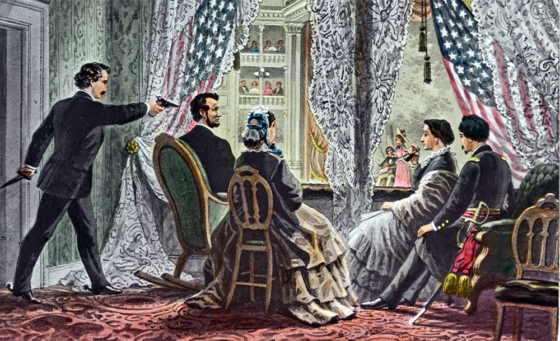
“The first Sabres were deployed to Korea after front-line Russian jets appeared over the 38th Parallel.”
By Michael Jabbra
THE F-86 SABRE was the principal U.S. Air Force fighter during the Korean War. Developed in the late 1940s by North American Aviation, it served in the militaries of many nations for decades after its combat debut.
Here are some fascinating facts about America’s iconic early jet fighter.

It was inspired by a German design
The Sabre originally began as a straight-wing jet, but aerospace engineers at North American altered the design mid-stream to incorporate swept back wings. They made the change after being granted access to German data from tests of the Messerschmitt 262, the world’s first operational jet fighter.

It was the first serious challenger to the Soviet MiG-15
The first Sabres were deployed to Korea after front-line Russian jets appeared over the 38th Parallel. MiG-15s could easily outperform slower U.S. aircraft such as the P-51 Mustang, the F9F Panther, and the F-80 Shooting Star. Sabres almost immediately shifted the balance to the West. The first kill of a MiG-15 by a Sabre was on December 17, 1950. It was scored by Lieutenant Colonel Bruce Hinton. There would be many others to come.

Experts disagree on whether it was better than the MiG
The kill ratio of Sabres against MiG-15s has long been debated. Some put it at 10:1, which others claim a more modest 8:1. Part of the Sabre’s stellar performance has been attributed to superior skills of American pilots, when compared to North Korean fliers. Others attribute the wide gap to technology. For example, U.S. pilots wore G-suits to keep themselves from blacking out during high-speed manoeuvres; Communist pilots did not.

Some of America’s best jet pilots flew Sabres
Future Apollo 11 astronaut Edwin “Buzz” Aldrin was a Sabre flier, as was Robert Hoover, the chase-plane pilot present when Chuck Yeager broke the sound barrier. The two highest scoring aces of the Korean War, Captain Joseph McConnell and Colonel James Jabara, both flew the F-86.

It packed a killer punch
Most Sabres carried six .50 caliber machine guns — the standard weapon on most U.S. aircraft during World War Two. Some models in the U.S. and other countries’ arsenals were equipped with 20-millimetre cannons, 30-millimetre cannons, unguided rockets, or Sidewinder missiles. The F-86D, nicknamed the “Dog Sabre” or the “Sabre Dog,” was equipped with a collision-course radar and fire control system in a large radome in its nose. It was also armed with 24 Mighty Mouse unguided rockets.

Sabres performed some unbelievable feats
One F-86 pilot, Colonel Robinson Risner, managed to use his Sabre to actually push a wingman’s jet more than 100 miles back to base after his fellow flier’s damaged plane ran out of fuel mid-mission. Risner nudged the nose of his Sabre into the tailpipe of 1st Lt. Joseph Logan’s F-86 and guided the stricken bird from Manchuria out over the Yellow Sea. Once out of enemy airspace, Logan bailed out. Unfortunately, he drowned before he could be rescued.

The Soviets were so impressed with the Sabre, they copied parts of it
As the F-86 proved its mettle against front-line Russian jets over Korea, Moscow hoped to recover an intact copy of the American warplane to study. Knowing this, the U.S. went to great lengths to destroy from the air all the downed Sabres they could, lest they fall into enemy hands. In October of 1951, the communists finally got their chance when a lone Sabre force landed on a stretch of the North Korean coast. The downed plane was shipped to the U.S.S.R. where its components, like the coveted gyroscopic gunsight, were copied. The same technology was added to future Russian warplanes, like the MiG-17, which ended up being used against American jets later during the Vietnam War.

It would go on to fight in a number of wars
Though the Sabre is best known for its service in the Korean War, F-86s were also used in other conflicts. Taiwanese Sabres fought Chinese MiG-15s and MiG-17s during hostilities in 1958. The Portuguese air force sent Sabres into battle during the 1963 to 1974 Guinea-Bissau War of Independence. In 1965, Pakistani models fought Indian Gnats during the Indo-Pakistan War. They would see action again when the two countries resumed their war in 1971.

It enjoyed six decades of service
More than 9,800 Sabres would roll off assembly lines before production ended. Although the United States Air Force was the principle user, more than 20 variants of the F-86 would serve in militaries of more than 26 nations, including Germany, Peru, Norway and Saudi Arabia. Canada, Australia, Japan and Italy would manufacture their own domestic versions of the jet. Bolivia deactivated the last operational squadron of F-86 as recently as 1994.

Conclusion
I always liked the clean, simple appearance of the Sabre. I once saw a Sabre streaking over the crowd at an air show I attended some years ago. Still swift, and still razor sharp.
Michael Jabbra is a writer, researcher, and entry-level computer technician in Los Angeles. He likes military history as much as other people like sports or celebrity news. His grandfather, Douglas Walstrom, served on the design team for the Sabre’s cockpit electrical system. Contact Michael Jabbra here.
References:
https://www.airspacemag.com/history-of-flight/10-great-pilots-4026745/
https://www.militaryfactory.com/aircraft/detail.asp?aircraft_id=120










You forgot about the South African Air Forces’s F86s, and South African Cheeata Number 1 Squadron in Korea-just like the Brits conveniently forgot about South Africans pilots in the battle of Britton and through WW2-with RAF top scorer South African Sailer Malan-The Brits to this day can not over come their humiliation in the Anglo Boer War!
Sisewinder missles were not adopted until 1956. They could have been used in the Korean Conflict.